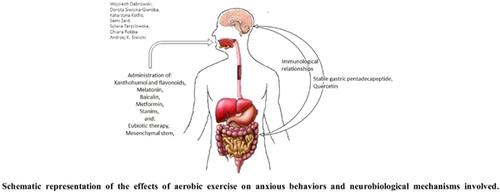Current Neuropharmacology ( IF 5.3 ) Pub Date : 2021-07-31 , DOI: 10.2174/1570159x18666201119155535 Wojciech Dabrowski 1 , Dorota Siwicka-Gieroba 1 , Katarzyna Kotfis 2 , Sami Zaid 3 , Sylwia Terpilowska 4 , Chiara Robba 5 , Andrzej K Siwicki 6

|
A traumatic brain injury (TBI) initiates an inflammatory response with molecular cascades triggered by the presence of necrotic debris, including damaged myelin, hemorrhages and injured neuronal cells. Molecular cascades prominent in TBI-induced inflammation include the release of an excess of proinflammatory cytokines and angiogenic factors, the degradation of tight junctions (TJs), cytoskeletal rearrangements and leukocyte and protein extravasation promoted by increased expression of adhesion molecules. The brain-gut axis consists of a complex network involving neuroendocrine and immunological signaling pathways and bi-directional neural mechanisms. Importantly, modifying the gut microbiome alters this axis, and in turn may influence brain injury and neuroinflammatory processes. In recent years it has been demonstrated that the activity and composition of the gastrointestinal (GI) microbiome population influences the brain through all of above-mentioned pathways affecting homeostasis of the central nervous system (CNS). The GI microbiome is involved in the modulation of cellular and molecular processes which are fundamental to the progression of TBI-induced pathologies, including neuroinflammation, abnormal blood brain barrier (BBB) permeability, immune system responses, microglial activation, and mitochondrial dysfunction. It has been postulated that interaction between the brain and gut microbiome occurs mainly via the enteric nervous system and the vagus nerve through neuroactive compounds including serotonin or dopamine and activation by bacterial metabolites including endotoxin, neurotransmitters, neurotrophic factors, and cytokines. In recent years the multifactorial impact of selected immunomodulatory drugs on immune processes occurring in the CNS and involving the brain-gut axis has been under intensive investigation.
中文翻译:

脑肠轴——我们现在在哪里,我们如何调节这些连接?
创伤性脑损伤 (TBI) 引发炎症反应,其分子级联反应由坏死碎片的存在引发,包括受损的髓鞘、出血和受损的神经元细胞。在 TBI 诱导的炎症中突出的分子级联包括释放过量的促炎细胞因子和血管生成因子、紧密连接 (TJ) 的降解、细胞骨架重排以及由粘附分子表达增加促进的白细胞和蛋白质外渗。脑-肠轴由一个复杂的网络组成,涉及神经内分泌和免疫信号通路以及双向神经机制。重要的是,改变肠道微生物组会改变这一轴,进而可能影响脑损伤和神经炎症过程。近年来,已经证明胃肠道 (GI) 微生物群的活性和组成通过上述所有影响中枢神经系统 (CNS) 稳态的途径影响大脑。GI 微生物组参与细胞和分子过程的调节,这些过程是 TBI 诱导的病理进展的基础,包括神经炎症、血脑屏障 (BBB) 通透性异常、免疫系统反应、小胶质细胞激活和线粒体功能障碍。据推测,大脑和肠道微生物组之间的相互作用主要通过肠神经系统和迷走神经通过神经活性化合物(包括血清素或多巴胺)以及由细菌代谢物(包括内毒素、神经递质、神经营养因子和细胞因子。近年来,选定的免疫调节药物对发生在中枢神经系统和涉及脑-肠轴的免疫过程的多因素影响一直在深入研究。


























 京公网安备 11010802027423号
京公网安备 11010802027423号